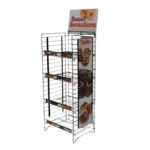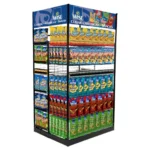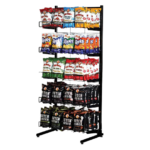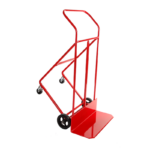After the inflation in 2023 created a volatile economy that lasted until the first half of 2024, retailers can now expect to enjoy a more positive outlook on sales and revenue.
However, the recession also created major shifts in the commerce landscape that should not be overlooked. Whether it’s the latest gadget, a chic pair of shoes, or special treats for a loved one, the choices consumers now make reveal much about their changed personal preferences.
Let’s discuss these trends across various retail categories, considering factors like age, income, and purchasing channels to get a comprehensive picture for the coming year.
#1. The Pulse of Major Retail Categories
In 2024, the retail landscape offers something for everyone, spanning categories like food, beverages, clothing, electronics, home, beauty, fitness, arts, entertainment, and books.
Consumers are increasingly health-conscious, directing significant spending toward organic and locally sourced food options. In fashion, sustainability is a driving force, with clothing, footwear, and accessories reflecting eco-friendly choices.
Smart home devices and wearable technology continue to captivate the electronics market, while home improvement products gain traction as people personalize their spaces. The beauty sector sees a rise in demand for clean beauty products, highlighting a preference for natural ingredients.
Fitness enthusiasts invest in home workout equipment, while arts, entertainment, and books benefit from a surge in digital subscriptions. Understanding these diverse consumer interests allows retailers to tailor their offerings, staying in tune with evolving market demands.
#2. Regular Vs. Special Occasion Purchases
Regular purchases, such as groceries, basic clothing, and personal care items, prioritize convenience and value. This often leads consumers to opt for budget-friendly choices or subscription services.
Special occasion purchases, however, are emotionally driven, often tied to celebrations like holidays, birthdays, and anniversaries. These can include high-end fashion, premium electronics, gourmet foods, and luxury beauty products. Consumers are willing to splurge more on them, seeking unique promotions and exclusive offers that enhance their celebratory moments.
And then there’s that unique category that features in both regular and special occasion purchases: confectionery.
U.S. consumers purchase chocolate or candy every week 2-3 times a week on average, with 86% saying it’s the treat they would indulge in occasionally. Every year, 98.2% of households spend $260 on them through three channels — in-store (58%), online (5%), and a combination of both (ordering online and picking up in-store) (36%).
Meanwhile, 64% of these confectionery’s total sales happen during annual occasions that over 8 out of 10 Americans celebrate:
- Valentine’s Day ($4.5B)
- Easter ($5.4B)
- Halloween ($.6.4B)
- Christmas ($6.5B)
While these numbers look positive, inflation has not spared the confectionery industry. Price is now the major consideration for 40% of buyers; 44% do so less often than in previous years, 30% purchase chocolate or candy items on sale, and 25% prefer old favorites instead of trying new ones.
By recognizing these purchasing behaviors, retailers can maximize their impact through tailored promotions for regular buys and enticing, exclusive options for special occasions.
#3. Online Shopping Vs. In-Store Experiences
The ongoing competition between these two shopping channels continues to shape the retail landscape, as the numbers below illustrate:
E-commerce: Rising Popularity
In the first five months of 2024 alone, 15.5% of consumers’ $687 billion monthly average retail spend was on e-commerce. Convenience, extensive variety, and often lower prices are the main attractions of online shopping. Tech-savvy consumers also appreciate the ability to browse and compare options from the comfort of their homes.
Electronics and apparel are the top products online shoppers purchase.
Brick and Mortar: Enduring Appeal
During the same period stated above, online shopping dwindled 12.2% from its peak in November the year before. Meanwhile, in-store sales rose 2.55%.
The tactile experience that physical stores offer is an allure online platforms can’t replicate. This is particularly important in categories like clothing, footwear, and electronics, where seeing, touching, and trying out products can significantly influence purchasing decisions.
BOPIS: Emerging Hybrid Shopping Model
Many retailers now offer buy-online-pick-up-in-store (BOPIS) options, merging the ease of online shopping with the immediacy of in-store pickup. This blended approach is also gaining traction due to the growing consumer demand for buying flexibility. Hybrid shopping accounts for 27% of retail sales.
#4. Teens to Seniors: How Age Matters
The influence of age on retail buying trends and behavior is multifaceted. Let’s break it down:
Young People
Teens, as digital natives, often lead the way in online shopping, particularly in fashion, beauty, and electronics. They are trend-driven, favoring brands that are socially conscious and active on social media.
Young adults, while similarly tech-savvy, tend to invest in long-term value items such as fitness equipment, home improvement products, and career-oriented books. Commonly referred to as Generation Z (born 1995-2003), they make up the largest group of hybrid shoppers at 33.3%.
Middle-Aged
Millennials (born 1980-1994) balance family needs with occasional splurges on family entertainment or vacations. They are the drivers of e-commerce, purchasing exclusively online 14.3% more than other age groups.
Seniors
Traditionally more inclined towards in-store shopping, the Baby Boomer generation (born 1946-1964) is increasingly embracing online platforms, particularly for healthcare products and services. However, 33.3% of them still prefer to shop in-store. They value reliability and excellent customer service, making them a loyal customer base for brands that meet these expectations.
In addition, high-income retirees are increasingly spending money on discretionary items such as gardening and home improvement products.
#5. Income Brackets and Spending Power
In 2024, income levels significantly shape retail buying trends and behavior, as follows:
Higher-Income Consumers
With more purchasing power, these individuals often gravitate toward luxury items, premium brands, and unique experiences such as high-end electronics, designer clothing, and gourmet food. They prioritize quality and exclusivity, are less sensitive to price, and also highly attentive to brand reputation and product excellence.
Middle-Income Consumers
This group strikes a balance between premium and budget-friendly options, focusing on the best value for their money. They are more likely to research products extensively before making a purchase, seeking reliable options that offer both quality and affordability. Their shopping cart usually comprises mid-range electronics, fashionable yet practical clothing, and home improvement items that enhance living spaces without breaking the bank.
Lower-Income Consumers
Primarily allocating budgets toward essentials like food, clothing, and basic electronics, these highly price-sensitive buyers actively seek discounts, deals, and value-based options.
The Bottom Line
As we look ahead to 2025, the landscape of retail buying trends and behavior is set to become more dynamic than ever. By closely monitoring shifts in consumer preferences, technological advancements, and demographic influences, retailers can create strategies that resonate with their diverse customer base.
It’s essential to balance the convenience of online shopping with the tangible experiences of in-store visits while also catering to the unique needs of different age groups and income brackets. By integrating both, you can create a more holistic shopping journey that appeals to a broader audience.
































